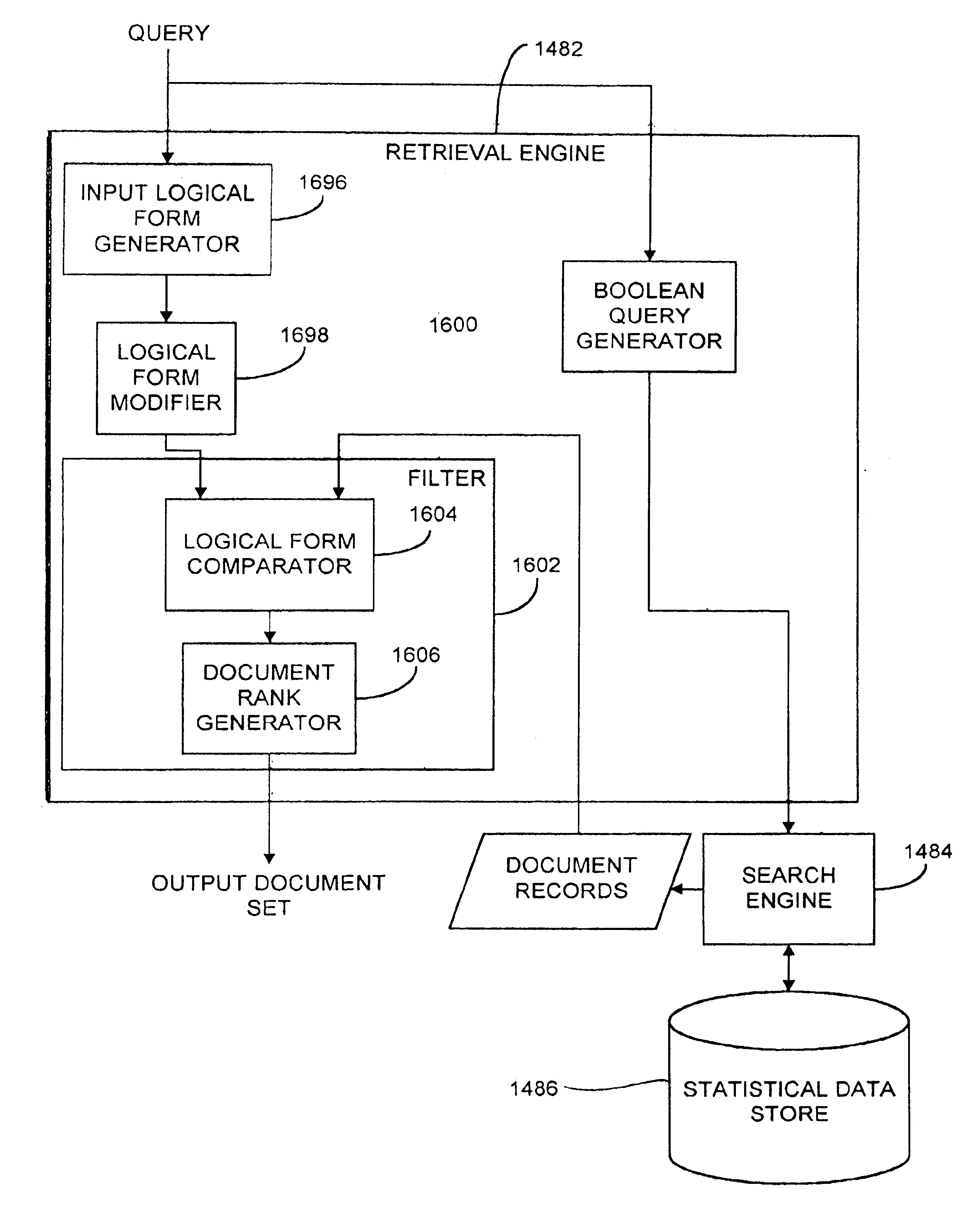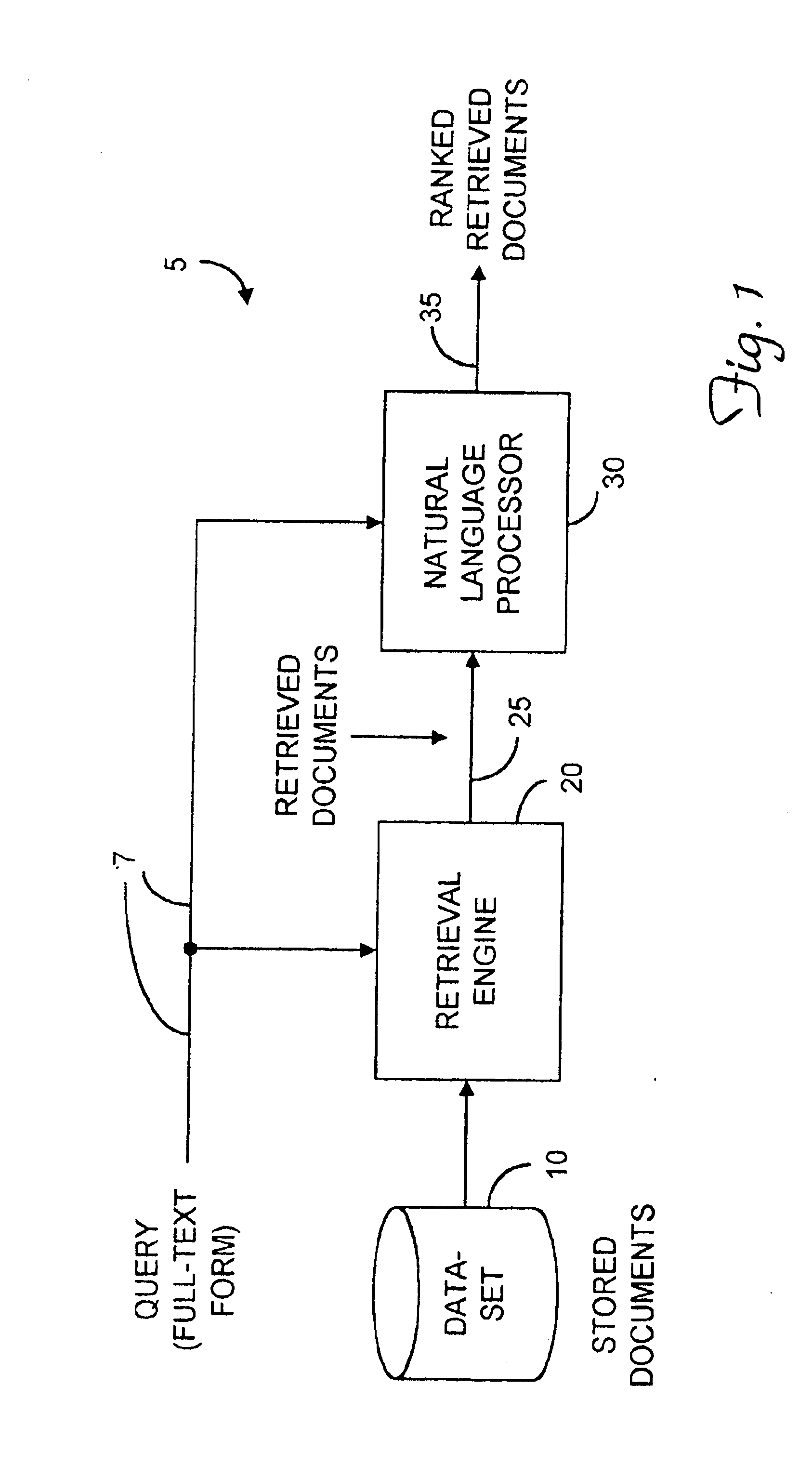System for processing textual inputs using natural language processing techniques
a textual input and processing technology, applied in the field of textual input processing system, can solve the problems of large amount of information that can be queried and searched, poor precision of conventional statistical search engine, and assumption, with respect to any language, and achieve the effect of improving performance or accuracy and increasing the precision of the information retrieval process
- Summary
- Abstract
- Description
- Claims
- Application Information
AI Technical Summary
Benefits of technology
Problems solved by technology
Method used
Image
Examples
Embodiment Construction
Overview
[0064]The present invention utilizes natural language processing techniques to create sets of logical forms corresponding to a first textual input and a second textual input. The present invention determines similarity between the first and second textual inputs based on a comparison of the sets of logical forms. In accordance with another aspect of the present invention, one or both of the sets of logical forms is modified, such as by obtaining paraphrases or suppressing certain logical forms. While the present invention is contemplated for use in a wide variety of applications, it is described herein, primarily in the context of information retrieval, for the purpose of illustration only.
[0065]In the information retrieval embodiment, the present invention creates sets of logical forms corresponding to an input query, and corresponding to a document set returned in response to the input query. The present invention also utilizes natural language processing techniques to mod...
PUM
 Login to View More
Login to View More Abstract
Description
Claims
Application Information
 Login to View More
Login to View More - R&D
- Intellectual Property
- Life Sciences
- Materials
- Tech Scout
- Unparalleled Data Quality
- Higher Quality Content
- 60% Fewer Hallucinations
Browse by: Latest US Patents, China's latest patents, Technical Efficacy Thesaurus, Application Domain, Technology Topic, Popular Technical Reports.
© 2025 PatSnap. All rights reserved.Legal|Privacy policy|Modern Slavery Act Transparency Statement|Sitemap|About US| Contact US: help@patsnap.com



